Home
ANDRÉ MALRAUX, THE ART MUSEUM, AND THE DIGITAL MUSÉE
IMAGINAIRE
The aspect of Malraux’s writing
I’d like to talk about today is his theory of art, as found for example
in The Voices of Silence and The
Metamorphosis of the Gods which are
his two major works in the field. In particular I’d like to focus on
his thinking
about the role of the art museum and his concept of the musée
imaginaire – often translated as “the museum without walls”
or simply “the imaginary museum”. And then I’ll add a brief word about
how all
this relates to today’s digital age.
Personally, I’m sometimes surprised by the attitude of certain modern thinkers towards the art museum and its purposes. There’s often a sense of gloom and negativity – almost, one might say, of antagonism. Theodor Adorno once wrote, for example, that
The German word ‘museal’ [museum-like] has unpleasant overtones. It describes objects to which the observer no longer has a vital relationship and which are in the process of dying... Museum and mausoleum are connected by more than phonetic association. Museums are the family sepulchres of works of art.
And in a similar vein, Maurice Merleau-Ponty writes:
The
museum gives
us a thieves’ conscience. We occasionally sense that these works were
not
intended to end up between these morose walls... We are well aware that
something has been lost and that this meditative necropolis is not the
true
milieu of art...
Now, André Malraux’s views contrast very strongly with ideas such as these. Regrettably, given time constraints, I won’t be able to explore the fundamental ideas on which his theory of art rests – which are fascinating and very carefully thought out, I should say – but fortunately this won’t prevent me from outlining those aspects of his thinking that relate to our topic today.
Malraux, I should stress at the outset, has a very keen awareness of the history of art – much keener, I would argue, than many contemporary writers in aesthetics who often discuss art in a rather abstract, disembodied way. And even a glance at the history of art, Malraux points out, tells us that the art museum is a modern invention – an institution that, in its present form, has been in existence for only about two hundred years. In other cultures and other times, painting and sculpture played a role very different from the one we assign them today. Indeed, Malraux reminds us, many of the objects that we today call art – such as African ceremonial masks or Egyptian sculptures – were not originally regarded as art at all: in their cultures of origin, they were seen as ancestor figures, or images of the gods, for example. For us today, however, Malraux argues, the art museum is central to our understanding of, and our response to, those objects we regard as works of art, irrespective of their cultural origin. In strong contrast with the views of Adorno or Maurice Merleau-Ponty, Malraux regards the art museum as art’s ideal location. For us today, the art museum is art’s true home.
Why does Malraux think this? In brief, his answer is that our responses to works of art today are less concerned with “content” – with their “anecdotal elements” if I can call them that – than with styles – that is, with the particular means the artist employs, and the way he or she employs them. Now, the specific style of an artist is revealed most clearly and most powerfully, Malraux argues, when confronted with other works of art, and the art museum is one of the key places in which such confrontations are made possible. This response to art – this impulse to confront styles one with another – is, Malraux reminds us, very much a modern phenomenon, one that would not have been understood before the era of the art museum. “In the seventeenth century,” he writes, “a Sung painting would not have been compared with a work by Poussin: that would have meant comparing a ‘strange-looking’ landscape with a noble work of art.” That is, it would have meant comparing things that could not properly be compared – things of different kinds. But for us today, these two works belong to the same world – the world of art – and our response places them on the same footing, and sees them both as works of art – simply works in different styles. In short, whether we’re speaking about painting, sculpture, or other forms of visual art, we today instinctively tend to establish a dialogue between different works, and whether we’re conscious of it or not, it’s through this dialogue that each work comes most fully to life.
This remains true, Malraux argues, even for an exhibition devoted to the works of a single artist. Because here also we tend to compare and contrast, instinctively looking for the work or works in which the artist in question seems to achieve the greatest mastery of his or her style – the works in which he or she seems least indebted to other artists. So here again, the art museum functions as facilitator of a dialogue, a dialogue, Malraux argues, that lies at the heart of our modern response to art.
We can now begin to see how strongly Malraux’s thinking about the art museum differs from that of thinkers like Adorno or Merleau-Ponty. Far from being “in the process of dying” as Adorno suggests, works of art in the art museum are, in Malraux’s eyes, animated by the context in which they are placed. Viewed in this light, the art museum is the very reverse of Adorno’s “mausoleum” – or of a “necropolis” as Merleau-Ponty suggests. On the contrary, it is a key part of the dynamic of our modern world of art – the locus of a colloquy of images in which new light is thrown on each contribution by the contributions of all the others.
Some commentators, I should perhaps add, have been slightly alarmed by this aspect of Malraux’s thinking, arguing that he is detaching works of art from their historical context and isolating them in a cultural vacuum. But this is to misread him and take his argument to extremes he doesn’t intend. First, as I’ve said, Malraux is very keenly aware of the history of art, and he’s quite happy to agree that we never entirely divorce a work from the historical context in which it was created. But, while this is true, he is also aware that each great work of art contains elements that allow it to transcend – to reach beyond – the context in which it was created. Which is why he writes that “the great work of art belongs to history, but it does not belong to history alone”. And of course if this were not the case, it would be very difficult to explain why so many works created centuries, or even millennia ago, in cultural contexts we often barely understand, still seem vital and alive to us today. So while it’s often helpful to have information about when a work was created, by whom, and why, a true work of art, Malraux argues, also belongs to a realm beyond history, which, for lack of a better phrase, we today simply call the world of art.
At one level, the idea of the musée imaginaire is simply a reflection of practical realities.
In the eighteenth century, when Hume, Kant and others were first establishing the discipline that came to be known as aesthetics, the domain of art – or the “fine arts” to use the terminology of that era – was much narrower than it is today. Art – or the fine arts – simply meant European art from the Renaissance onwards plus selected Graeco-Roman works – like the Apollo Belvedere or the Laocoön for example – two of the favourites at the time. Everything outside this boundary wasn’t just “bad art”; it simply wasn’t art at all: like the Sung painting we looked at earlier, it was beyond the pale of art.
But over the past century, this situation, as we know, has changed radically. Art for us today encompasses the works of all cultures and takes in not just contemporary art and the limited European canon familiar to Kant and Hume, but also pre-Renaissance European works such as those of the Byzantine and Romanesque eras, works from Asia, Africa, and a wide range of other non-Western cultures, including the earliest urban civilizations and even Palaeolithic times. Malraux describes this radical enlargement of our world of art as the emergence of the “first universal world of art”. And he means the word “first” quite literally: because once we reflect on it, we quickly realize that it’s a development without precedent in human history: it has, quite simply, never happened before.
The effects of this major event on the institution of the art museum have been far-reaching. The world of the “fine arts” familiar to Kant and Hume consisted primarily of objects easily accommodated within art museums: it was largely a world of easel paintings, and moveable sculpture such as Graeco-Roman statues. Now, many of the objects in our new universal world of art are also readily transportable – such as African masks or Buddhist heads – but there are also large numbers that are not. We can hardly think, for example, of detaching the sculptures at Chartres, or removing Giotto’s frescos at Assisi, the mosaics at Ravenna, or the frescos at Ajanta. Thus, our new universal world of art is not only more diverse than its predecessor but in many cases less adaptable to the art museum. And even when they are moveable, the objects we now include under the heading “art” are usually not found in any single art museum but are scattered across the world in museums in countries in which they originated, or which could more easily afford to purchase them.
As a first approximation then – but only that because there’s more to say – this is what Malraux means by the musée imaginaire. Given that the breadth and diversity of today’s world of art far surpasses the capacities of any single art museum, or even two or three, and that many of the objects are in any case not moveable, the musée imaginaire is our imaginary collection of all the works, both inside and outside art museums, that we today regard as important works of art. Malraux, I should quickly add, is not seeking to be prescriptive about this and he’s quite happy to agree that everyone for whom art is important will have their own musée imaginaire – their own ideal collection of works – although he believes that there tend to be large areas of agreement. Due allowance made for these individual differences, however, the musée imaginaire is simply the ideal art museum that each of us carries around in our minds, filled with those works that mean the most to us, all of which are, of course, participants in the same dialogue that the individual art museum makes possible.
Now, if you happen to find a reference to Malraux’s idea of the musée imaginaire in a book on art theory or perhaps on the web, it’s quite possible it won’t say what I’ve just said, or at least not clearly, and that it will focus on a different issue – the photographic reproduction of works. You might find, for example, statements like these:
· “Any work of art that can be photographed can take its place in Malraux’s super-museum”. Donald Crimp, 1983.
·
The
“rich
display of reproduced images, open to us on page and screen, [is what]
Malraux
called ‘the imaginary museum’”, Alberto Manguel, 2000
·
“In a way we are already
within Malraux’s
imaginary museum. There is no end of beautifully produced art works in
monographs on particular artists, movements or epochs”.
Matthew Kieran, 2005.
Now, comments of this kind are misleading. Malraux certainly recognises that photographic reproductions play a vital part in familiarising us with works of art, and he’s well aware that everyone’s musée imaginaire, including his own, is indebted to a greater or lesser degree to illustrated art books and to television programs featuring works of art. With photography, he once wrote, the plastic arts “invented their printing-press” and he himself made full use of this printing-press in his own books on art, which are generously illustrated.
Despite this enthusiasm for the achievements of photographic reproduction, however, Malraux is not simply equating the musée imaginaire with a vast collection of photographic reproductions, as if he were simply talking about a library well-stocked with art books. Photographic reproduction, he writes, is an “instrument” of the musée imaginaire – a very important instrument, but not the thing itself. He nowhere suggests, as Donald Crimp claims, that, “Any work of art that can be photographed can take its place in [a] super-museum” – the term “super-museum” being in any case Crimp’s, not Malraux’s. Nor does he argue, as Mathew Kieran suggests, that the musée imaginaire is simply “beautifully produced art works in monographs on particular artists.” The key point, as I have said, is that the musée imaginaire is the ideal art museum that each of us carries around in our minds; it is our own selection – the works that mean the most to each of us, the works we truly admire. Comments such as those I’ve just quoted mistake the means for the end.
Occasionally, commentators have gone even further and suggested that Malraux wanted to do away with art museums altogether because photographs would take their place. One recent writer claims, for example, that for Malraux the musée imaginaire is “the exhaustive photographic archive of the art of all the civilizations of the world that will render the traditional physical museum redundant. In other words, the illustrated art book is to replace the museum”. And just recently I found another commentator who claims that “Malraux made the case that photography enabled a global compare-and-contrast of art and eliminated the need for traditional museums where actual works were exhibited.”
Again, these comments are quite mistaken. At no time did Malraux suggest that art museums should be eliminated, and anyone familiar with his work as France’s Minister for Cultural Affairs, in which showed such a strong interest both in the conservation of art and in commissioning new works, would know immediately that this proposition is quite bizarre. Malraux believed photographic reproductions play a vital role, but nowhere does he suggest that they can simply replace the original, and still less does he suggest that the illustrated art book will eliminate the need for the art museum.
What would Malraux have thought about digital reproduction and the greatly improved access to images made possible by the Internet? We we can only conjecture, of course, but personally I haven’t the slightest doubt that he would have welcomed both with enthusiasm. If photography was, in his words, visual art’s printing press, then the advances we’ve now seen in digital technology would, in his eyes, have represented a series of brilliant new opportunities for this “printing press”. The musée imaginaire, he would have thought, could now not only be a museum in the mind, but one that each of us could increasingly bring to life at will on a computer screen. In addition, of course, there’s the emphasis he places on the idea of dialogue between works of art, and here also, Malraux would have instantly recognised the new opportunities for juxtaposing works and comparing different elements of them. As I say, we can only conjecture about this. Certainly he would not have thought that digital images would render the art museum unnecessary, any more than he thought that photographic reproduction would have that result. But as a writer, and as Minister in the French Government, Malraux never flagged in his enthusiasm for the visual arts, and in seeking ways of improving access to them; so I have no doubt at all that, were he alive today, he would have seen the digital era as a field of new possibilities that should not on any account be missed.
This
brief paper was delivered at a symposium
entitled Imaging
Identity, at the National Portrait Gallery in Canberra July
15-17,
2010. The paper does not provide an in-depth explanation
of Malraux's understanding of the art museum and the musée
imaginaire (I do this in
my two recent books - see homepage) but it does outline some
general features of his
thinking and corrects
certain common misinterpretations.
The paper was
accompanied by a
PowerPoint show. The images shown here were among those used. There are some additional brief comments about Malraux's thinking about the musée imaginaire and the art museum in Myth 9 on this page.

 |
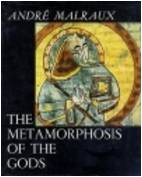 |
Malraux has a very keen awareness of the history of art – much keener than many contemporary writers in aesthetics who often discuss art in a rather abstract, disembodied way.
For us today, Malraux argues, the art museum is central to our understanding of, and our response to, those objects we regard as works of art, irrespective of their cultural origin.
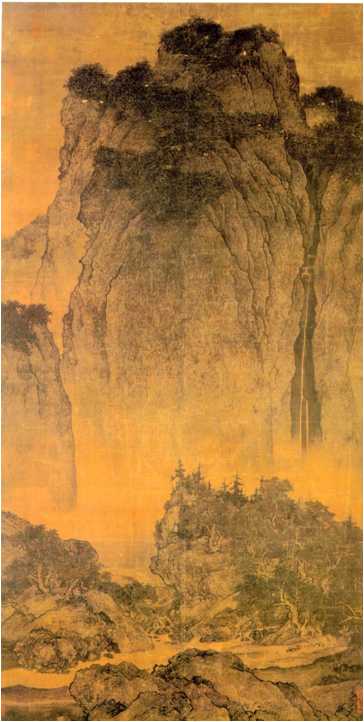
Sung landscape
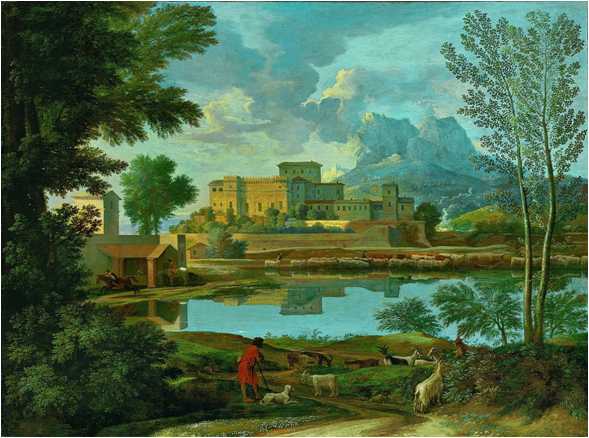
Poussin

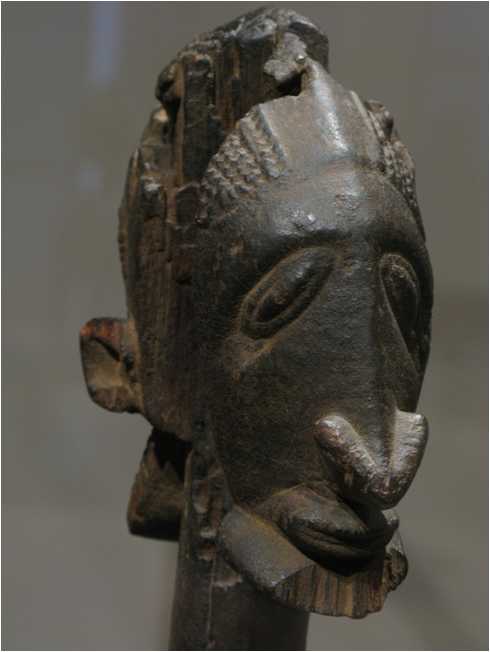
The 'musée imaginaire' is our imaginary collection of all the works, both inside and outside art museums, that we today regard as important works of art.
Despite his enthusiasm for the achievements of photographic reproduction, Malraux is not simply equating the 'musée imaginaire' with a vast collection of photographic reproductions.
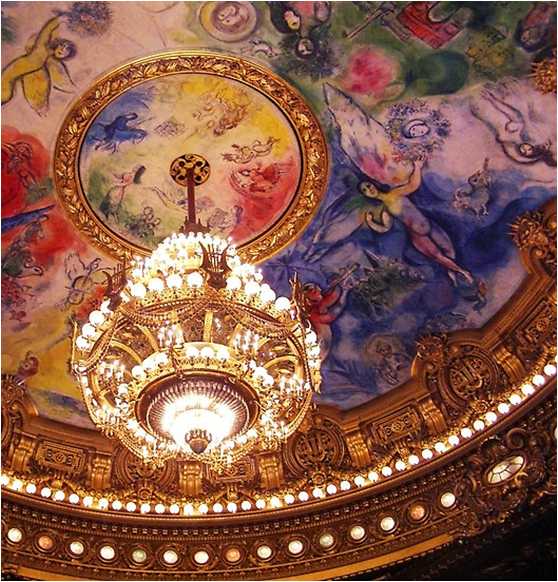
Marc Chagall's ceiling of the Paris Opera, commissioned by Malraux
 |
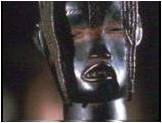 |
|
 |
Malraux in 1975.
Stills from
a television series about African
art. |
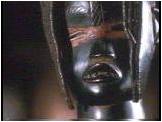 |
 |
 |
If photography was, in Malraux's words, 'visual art’s printing press', then the advances we’ve now seen in digital technology would, in his eyes, have represented a series of brilliant new opportunities for this printing press.